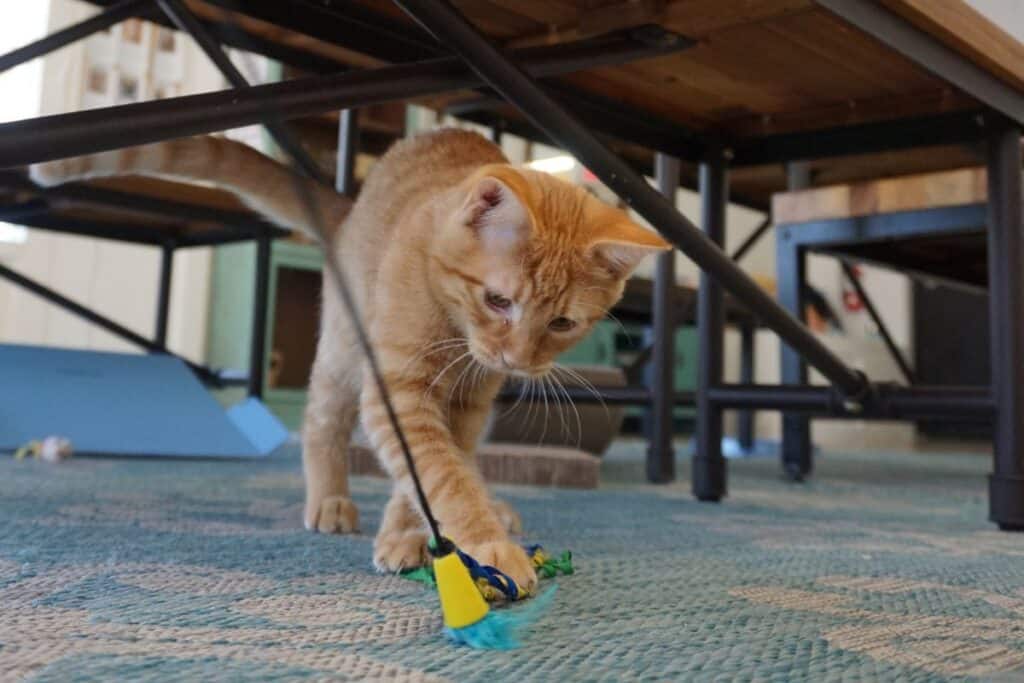Humans tend to be either right-handed or left-handed. This means when you go to grab something, write a note, or point, you tend to predominately favor one hand over the other.
Cats are also known to prefer the use of one paw over the over. In cats and other four-legged animals, the use of one limb over the other is known as pawedness.
First studies about paw preference in cats
Researchers have been analyzing paw preference in cats for almost 70 years.
The first published research that looked at paw preference in cats dates back to 1954 [1]. In this study published in Hungarian, researchers placed food and noted which paw cats used to reach out to the food.
The limited study of 15 cats found that 8 used their right paw, 4 used their left paw, and 3 used both paw equally.

Are more cats right-pawed or left-pawed?
Known as handiness in humans, the distribution to be right-handed over left-handed in people is 90:10. It’s been less conclusive for researchers to figure out if left or right paws are predominately used in cats.
Studies published since the 1950s have led to contradicting conclusions as to which paw cats predominately use.[2]
Some studies have shown a higher preference for left-pawed in cats. Other studies have shown a higher preference for right-paw use in cats. And some studies have shown the highest proportion of cats in their research were ambilateral (an equal preference by a cat for both their right and left paw, also known as ambidextrous). [3]
The studies are equally as contradicting as to whether there is a sex-linked paw preference in cats. Studies have not agreed with each other about the paw preference in female cats versus male cats. [2]
Unlike humans, where is there is a strongly documented prevalence of right-handedness over left-handedness, the available cat research indicates that paw preference is at the individual level in felines.
Observe your own cat’s paw preference
If you want to see if your cat is right-pawed, left-pawed, or ambilateral you can observe them as they use their paws. Dangle a string or a toy in front of your cat and see which paw they tend to use to reach out towards the toy. When your cat reaches out to inspect something, which paw are they using?
References
[1] Grastyan, E., & Molnar, L. (1954). Experimental study of handedness in cat. Kiserletes orvostudomany, 6(6), 541-548.
[2] Ocklenburg, S., Isparta, S., Peterburs, J., & Papadatou-Pastou, M. (2019). Paw preferences in cats and dogs: Meta-analysis. Laterality: Asymmetries of Body, Brain and Cognition, 24(6), 647-677. https://doi.org/10.1080/1357650X.2019.1578228
[3] Cole, J. (1955). Paw preference in cats related to hand preference in animals and men. Journal of Comparative and Physiological Psychology, 48(2), 137. https://doi.org/10.1037/h0040380







